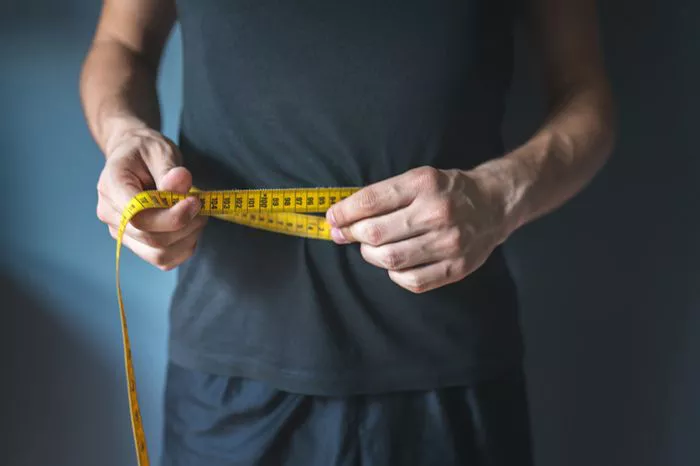Belly fat is a common concern for many men. It not only affects your appearance but also poses serious health risks. This comprehensive guide will provide you with effective strategies to help you lose belly fat and improve your overall health.
Understanding Belly Fat
Types of Belly Fat
There are two main types of belly fat:
Subcutaneous Fat: This is the fat that lies just under the skin. It’s the fat you can pinch.
Visceral Fat: This fat is deeper inside your abdomen and surrounds your internal organs. It’s more dangerous and linked to various health issues.
Health Risks of Belly Fat
Heart Disease: Excess belly fat is linked to an increased risk of heart disease.
Type 2 Diabetes: Visceral fat can lead to insulin resistance, a precursor to type 2 diabetes.
High Blood Pressure: Belly fat can contribute to hypertension.
Metabolic Syndrome: A combination of conditions that increase the risk of heart disease, stroke, and diabetes.
Setting Realistic Goals
Importance of Realistic Goals
Setting realistic and achievable goals is crucial for long-term success. Unrealistic expectations can lead to frustration and abandonment of your weight loss efforts.
How to Set Goals
Specific: Define what you want to achieve.
Measurable: Track your progress with measurable outcomes.
Achievable: Set goals that are within your reach.
Relevant: Ensure your goals are relevant to your overall health.
Time-bound: Set a timeline for achieving your goals.
Healthy Diet
Balanced Diet
A balanced diet is essential for losing belly fat. Focus on incorporating a variety of nutrient-dense foods into your diet.
Foods to Include
Lean Proteins: Chicken, fish, beans, and legumes.
Whole Grains: Brown rice, quinoa, and whole wheat bread.
Fruits and Vegetables: Aim for a colorful variety.
Healthy Fats: Avocado, nuts, and olive oil.
Foods to Avoid
Sugary Drinks: Sodas and fruit juices.
Processed Foods: Snacks and fast food.
Refined Carbs: White bread, pastries, and sweets.
Trans Fats: Found in some margarine and packaged baked goods.
Portion Control
Eating the right portion sizes is crucial. Use smaller plates, measure your food, and be mindful of serving sizes.
Meal Planning and Preparation
Plan your meals ahead of time to avoid unhealthy choices. Prepare meals in advance to ensure you always have healthy options available.
Regular Exercise
Importance of Exercise
Regular physical activity is vital for burning calories and reducing belly fat.
Types of Exercise
Cardio
Cardiovascular exercise helps burn calories and improve heart health. Examples include:
- Running
- Cycling
- Swimming
- Jump Rope
Strength Training
Building muscle mass increases your metabolism and helps burn fat. Incorporate:
- Weight Lifting
- Resistance Bands
- Bodyweight Exercises (push-ups, squats)
High-Intensity Interval Training (HIIT)
HIIT involves short bursts of intense exercise followed by rest. It’s highly effective for fat loss.
Exercise Routine
Create a balanced workout routine that includes cardio, strength training, and HIIT. Aim for at least 150 minutes of moderate-intensity exercise per week.
Importance of Hydration
Benefits of Drinking Water
Boosts Metabolism: Drinking water can temporarily boost your metabolism.
Reduces Appetite: Sometimes thirst is mistaken for hunger.
Aids in Digestion: Water helps keep your digestive system functioning properly.
How Much Water to Drink
Aim for at least 8 glasses of water per day. Adjust based on your activity level and climate.
See Also: What Are Foods That Burn Belly Fat
Sleep and Stress Management
Importance of Sleep
Lack of sleep can lead to weight gain. Aim for 7-9 hours of quality sleep per night.
Managing Stress
Chronic stress can lead to weight gain, especially around the belly. Practice stress management techniques such as:
- Meditation
- Yoga
- Deep Breathing Exercises
- Mindfulness
Avoiding Alcohol
Effects of Alcohol on Belly Fat
Alcohol is high in empty calories and can contribute to weight gain. It also affects your liver’s ability to burn fat.
Tips for Reducing Alcohol Intake
Set Limits: Decide in advance how much you will drink.
Choose Lower-Calorie Options: Opt for light beer or wine over sugary cocktails.
Drink Water Between Alcoholic Drinks: This can help reduce your overall intake.
Tracking Progress
Importance of Tracking
Monitoring your progress helps keep you motivated and allows you to adjust your plan as needed.
How to Track
Weigh Yourself Regularly: Once a week at the same time of day.
Measure Your Waist: Use a tape measure to track changes in belly size.
Keep a Food and Exercise Journal: Record what you eat and your physical activity.
Common Myths About Belly Fat
Spot Reduction Myth
It’s impossible to lose fat from just one area of your body. Focus on overall fat loss through a combination of diet and exercise.
Fat-Burning Foods
There are no magic foods that burn belly fat. A healthy diet and regular exercise are key.
FAQs About Belly Fat
How Long Does It Take to Lose Belly Fat?
It varies from person to person. Consistent effort with diet and exercise will show results over time.
Is It Possible to Lose Belly Fat After 40?
Yes, with the right approach to diet and exercise, men can lose belly fat at any age.
Do Fat Burners Work?
Fat burners are not a magic solution. A healthy diet and regular exercise are more effective.
Can You Lose Belly Fat Without Exercise?
Diet plays a crucial role, but exercise helps burn calories and build muscle, making it easier to lose belly fat.
Conclusion
Losing belly fat requires a combination of a healthy diet, regular exercise, proper hydration, adequate sleep, and stress management. By setting realistic goals and staying consistent, you can achieve a healthier and slimmer waistline. Remember, it’s about making sustainable lifestyle changes rather than seeking quick fixes.


